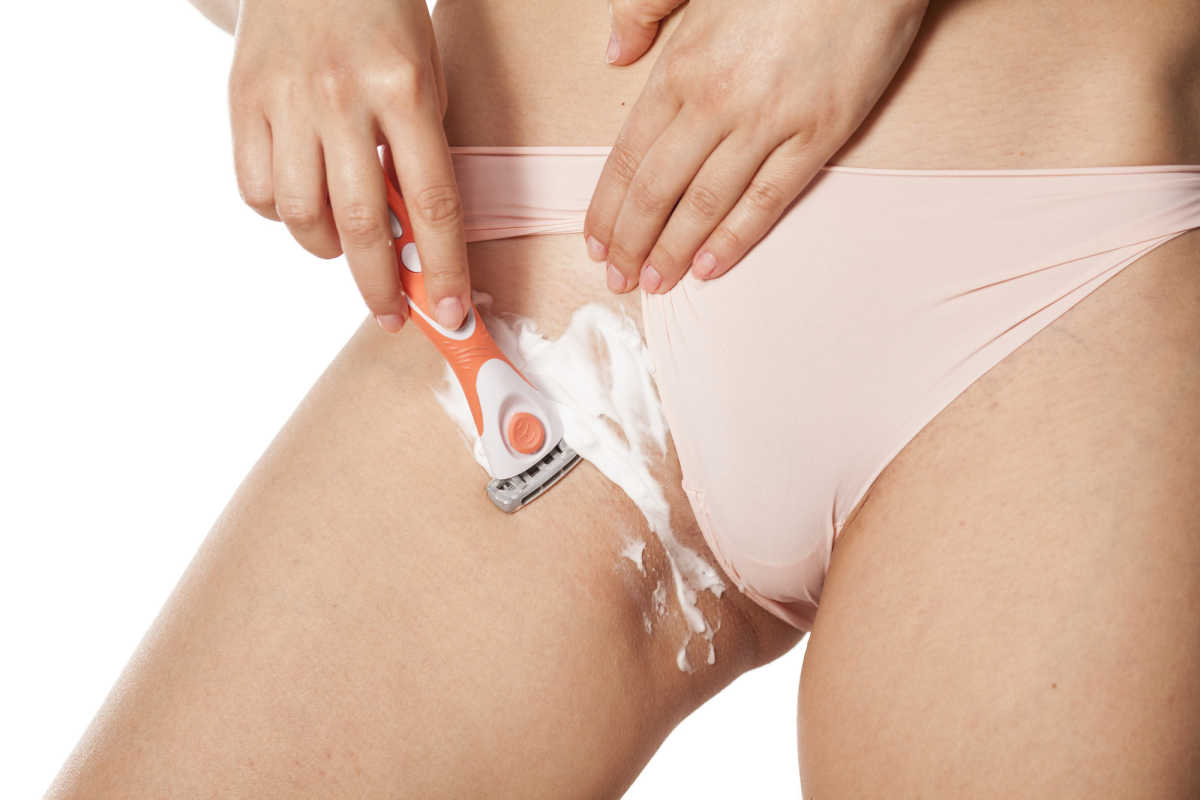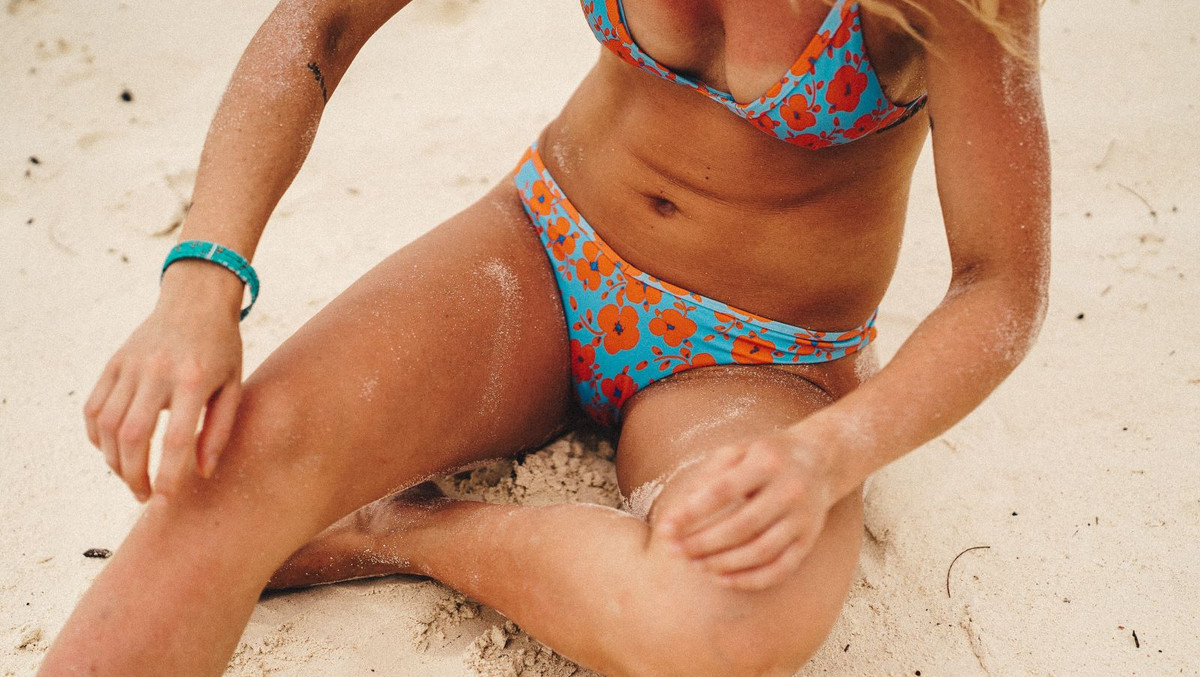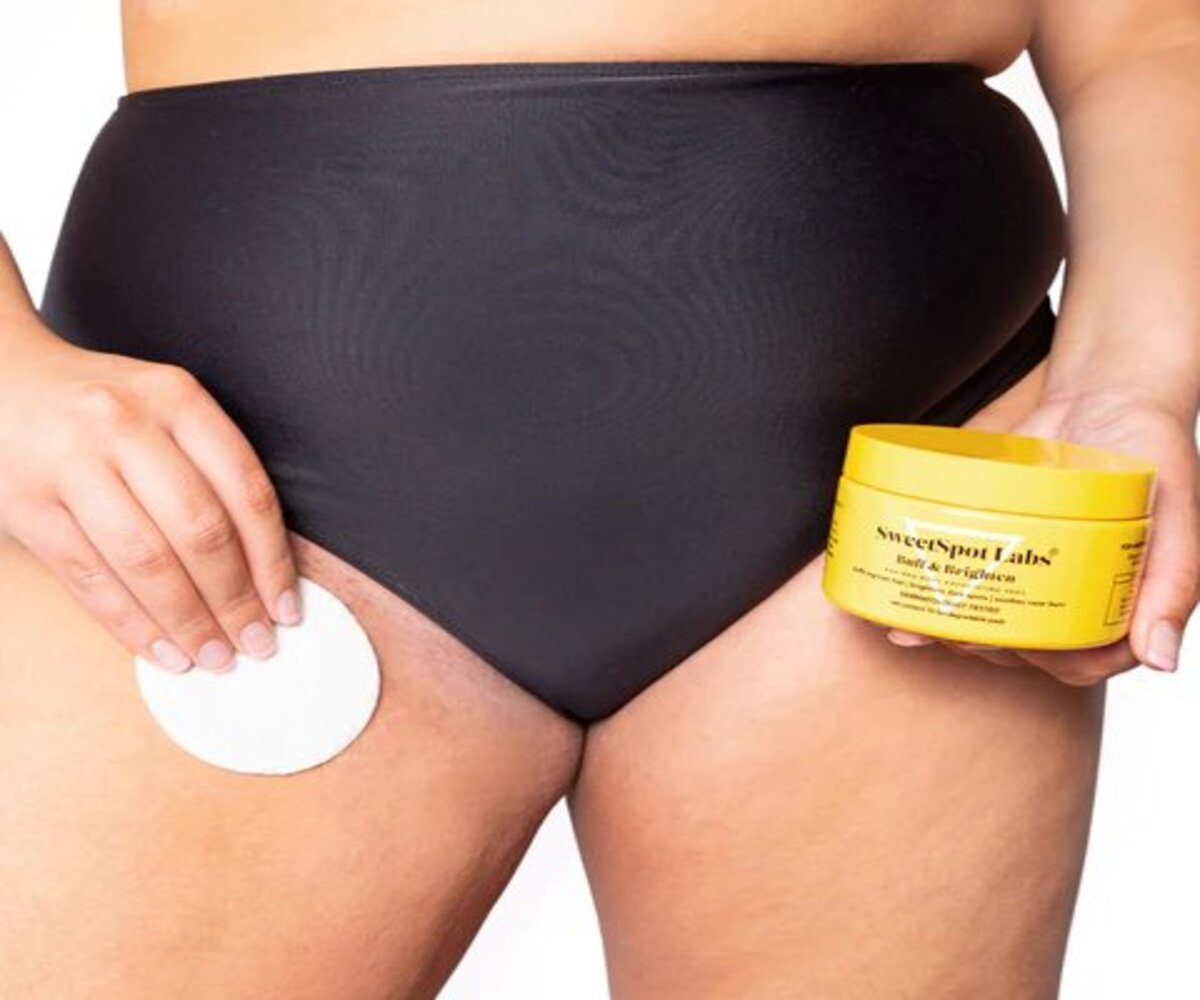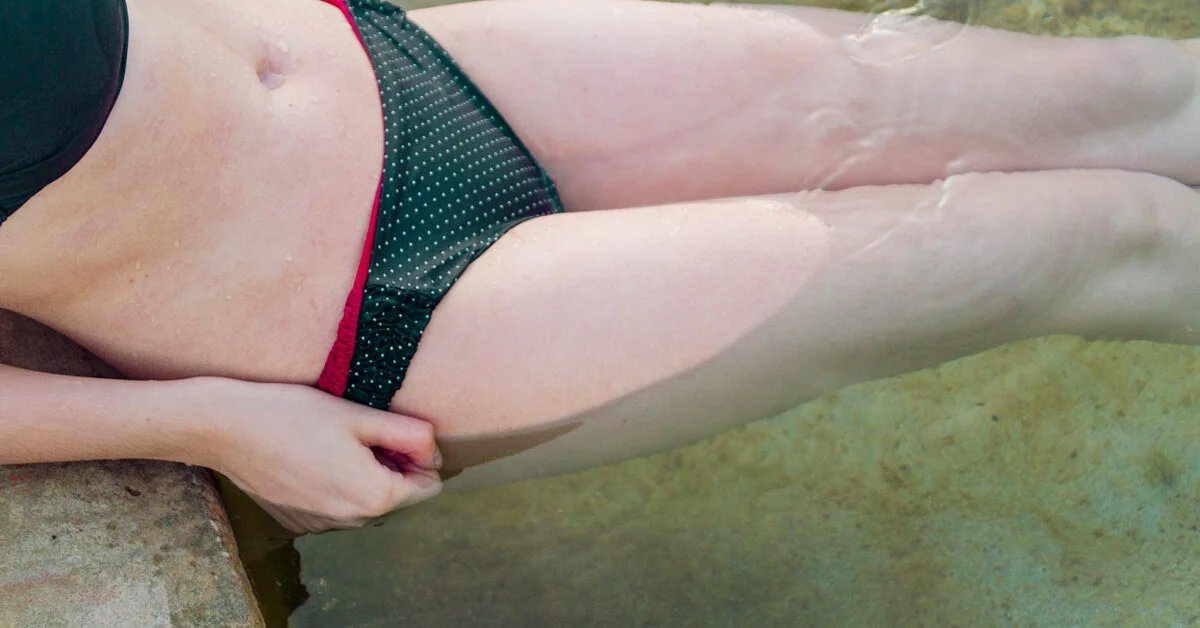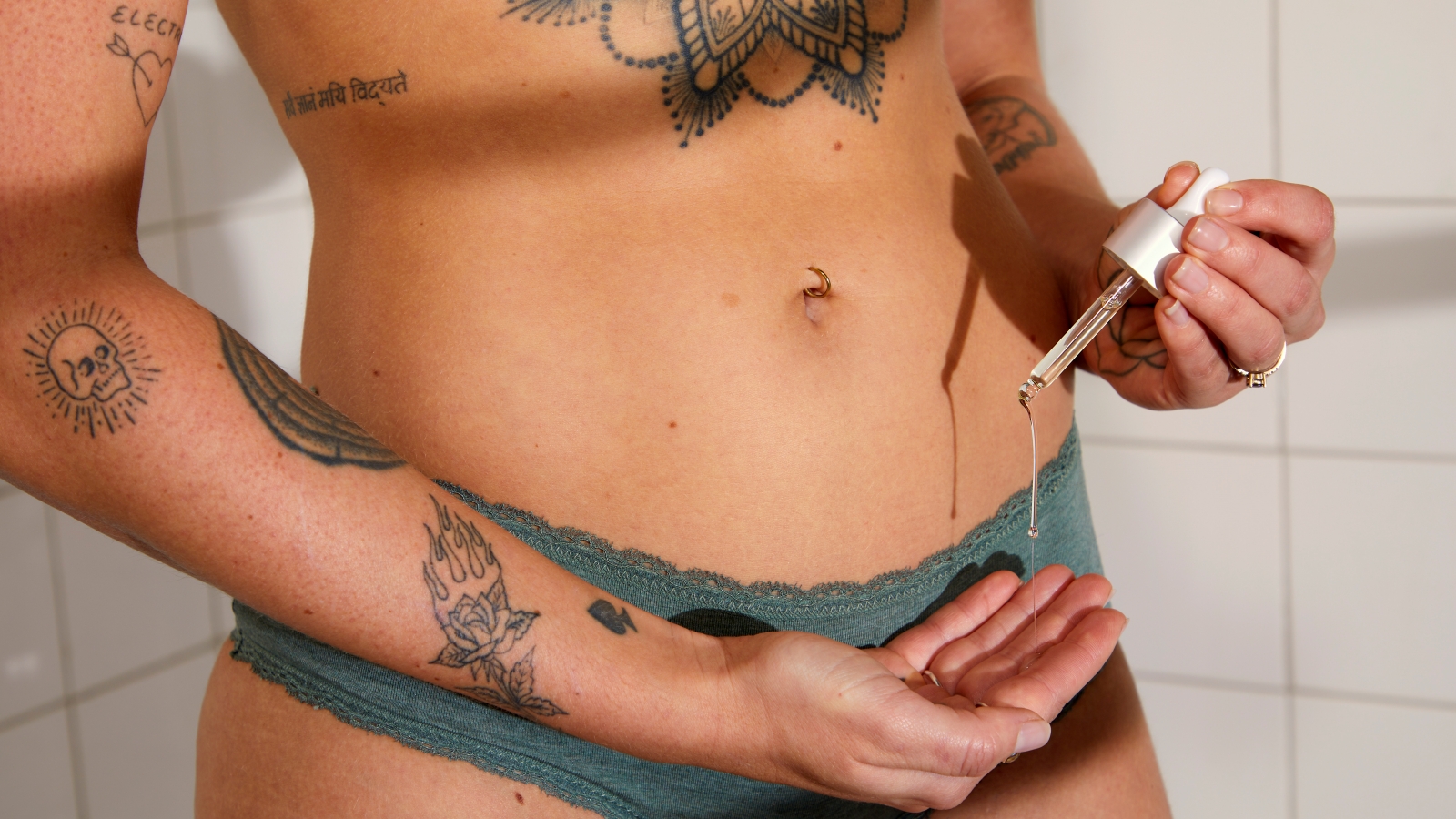Home>How-to Guides>For Women>How To Prevent Bikini Line Chafing
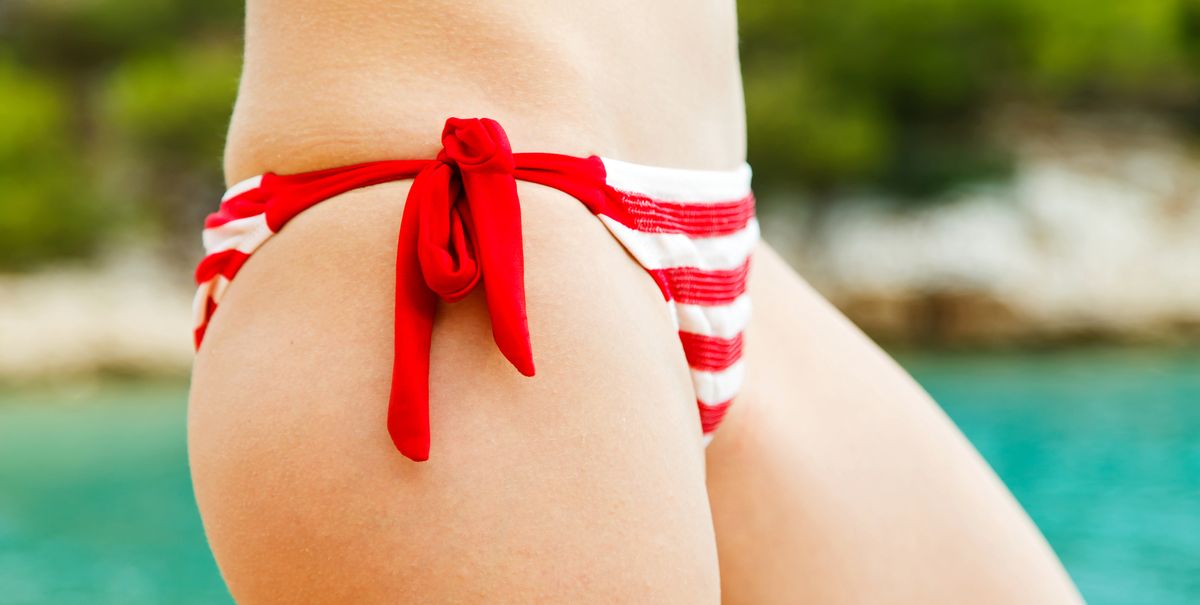

For Women
How To Prevent Bikini Line Chafing
Modified: September 23, 2023
Learn effective tips and tricks for women on how to prevent bikini line chafing. Keep your skin protected and comfortable all summer long.
(Many of the links in this article redirect to a specific reviewed product. Your purchase of these products through affiliate links helps to generate commission for Under-tec.com, at no extra cost. Learn more)
Table of Contents
Introduction
Welcome to the world of swimwear and sunny beach days, where the last thing you want to worry about is the discomfort caused by bikini line chafing. Whether you’re a seasoned beach babe or a novice sun seeker, chafing can put a damper on your summer fun. But fear not, as we explore the realm of preventing and alleviating this pesky problem.
Bikini line chafing is a common issue that affects many women. It occurs when the sensitive skin in the bikini area becomes irritated and inflamed due to friction. This can happen from activities such as swimming, sunbathing, or even just wearing tight-fitting clothing. The constant rubbing of the skin against fabric or other surfaces can lead to redness, soreness, and sometimes, even painful blisters.
While chafing may seem like a minor inconvenience, it can have a significant impact on your enjoyment of summer activities. It can make it difficult to relax on the beach, hinder your confidence in swimwear, and even interfere with your overall comfort throughout the day.
Fortunately, there are several measures you can take to prevent and alleviate bikini line chafing, allowing you to enjoy your time in the sun without discomfort. This article will guide you through the various causes of chafing, offer tips on preparing your skin, highlight the importance of choosing the right clothing and materials, and provide effective remedies for moisturizing and soothing irritated skin.
By implementing these prevention techniques and incorporating them into your daily routine, you can bid farewell to the woes of bikini line chafing and embrace a carefree and comfortable summer season. So, let’s dive in and discover how you can prevent and combat this annoying issue.
Understanding Bikini Line Chafing
Before we delve into the prevention strategies, it’s important to understand what exactly bikini line chafing is and why it occurs. Chafing is the irritation and inflammation of the skin caused by friction and repeated rubbing. When it comes to the bikini line, this refers to the area where your swimsuit bottoms or underwear meet the sensitive skin around your groin.
Chafing occurs when the delicate skin in this area is constantly subjected to friction from clothing, movement, or other surfaces. The friction causes the top layer of skin to rub against itself, leading to irritation and discomfort. This can be exacerbated by factors such as moisture, heat, and prolonged periods of activity.
The friction can be further intensified by activities that involve repetitive movements, such as walking, running, or swimming. The constant rubbing of the skin against fabric or other materials can lead to redness, soreness, and even the formation of painful blisters.
It’s important to note that bikini line chafing is not limited to swimsuit season. It can occur year-round, especially if you wear tight-fitting clothing or engage in activities that involve a lot of movement. Women who exercise regularly or participate in sports may also experience chafing in this area.
The severity of chafing can vary from person to person, with some individuals experiencing only mild discomfort, while others may endure more intense pain. Factors such as skin sensitivity, body shape, and the type of fabric worn can all contribute to the likelihood and severity of chafing.
By understanding the causes and effects of bikini line chafing, you can take proactive steps to prevent it. With the right knowledge and preventive measures in place, you can ensure that your summer adventures are free from the discomfort and annoyance of chafing. In the following sections, we will explore some of the common causes of bikini line chafing and provide practical advice on how to avoid it.
Common Causes of Bikini Line Chafing
Understanding the common causes of bikini line chafing is crucial in taking preventative measures. Here are some of the primary factors that contribute to the friction and irritation:
1. Friction from Clothing: Wearing tight-fitting or rough-textured swimsuits, underwear, or clothing can create increased friction against the delicate skin of the bikini area. The constant rubbing of the fabric against the skin can lead to chafing and discomfort.
2. Moisture and Sweat: Moisture and sweat accumulation in the bikini area can exacerbate chafing. Prolonged exposure to moisture, such as from swimming or excessive sweating, can soften the skin, making it more prone to irritation and chafing.
3. Thigh Rubbing: When the thighs rub against each other during movement, it can cause friction and chafing in the bikini area. This is particularly common in activities like running, walking for extended periods, or participating in sports.
4. Lack of Lubrication: Insufficient lubrication of the skin can make it more susceptible to chafing. Dry skin tends to be more prone to irritation and friction. It’s essential to keep the bikini area adequately hydrated and moisturized.
5. Improper Hair Removal: Shaving, waxing, or using depilatory creams to remove hair from the bikini area can sometimes result in skin irritation and chafing. It’s important to be cautious and use proper techniques to minimize the risk of chafing.
6. Allergic Reactions: Some women may have allergies or sensitivities to certain fabrics, detergents, or chemicals commonly found in swimsuits and underwear. These reactions can cause redness, itching, and chafing in the bikini area.
7. Poorly-fitted Swimwear: Wearing ill-fitting swimsuits that are too tight or have rough seams can increase the friction against the skin, leading to chafing. It’s essential to choose swimwear that fits properly and provides comfort and flexibility.
By understanding these common causes, you can take proactive steps to prevent bikini line chafing. The next sections will offer practical tips and techniques to prepare your skin, select the right clothing, and effectively prevent chafing, allowing you to enjoy your summer activities without any discomfort.
Preparing Your Skin for Bikini Line Activities
Properly preparing your skin for bikini line activities is a crucial step in preventing chafing. By following these tips, you can ensure that your skin is ready for the sun, sand, and water:
1. Exfoliate: Regularly exfoliating the bikini area helps remove dead skin cells, allowing for better absorption of moisturizers and reducing the likelihood of chafing. Use a gentle exfoliating scrub or a soft brush to exfoliate the area a few times a week.
2. Moisturize: Keeping the skin well-hydrated is essential to prevent dryness and friction. After exfoliating, apply a moisturizer that is free of harsh chemicals and fragrances. Look for one specifically formulated for sensitive skin to avoid any potential irritation.
3. Allow for Air-Drying: After swimming or any activity that leaves the bikini area damp, allow it to air-dry instead of using a towel. The friction caused by rubbing a towel against wet skin can contribute to chafing. If necessary, gently pat the area dry with a soft towel.
4. Avoid Harsh Soaps: Use mild, unscented cleansers or intimate washes when cleaning the bikini area. Harsh soaps can strip the skin of its natural moisture and make it more prone to chafing. Opt for gentle and hypoallergenic products instead.
5. Opt for Breathable Undergarments: When not swimming, choose cotton or moisture-wicking underwear that allows for proper airflow in the bikini area. Avoid synthetic materials that can trap moisture and increase the risk of chafing.
6. Consider Pubic Hair Maintenance: While personal preference plays a significant role in hair removal, some find that trimming or keeping the bikini area tidy can help minimize friction and prevent chafing. Find a hair removal method that works best for you and your skin.
7. Avoid Perfumes and Sprays: Fragranced products such as perfumes, body sprays, and talcum powder can irritate the delicate bikini area and lead to chafing. Stick to unscented products to minimize the risk of skin irritation.
By incorporating these practices into your skincare routine, you can effectively prepare your skin for bikini line activities and reduce the chances of experiencing painful chafing. But skincare alone is not enough; choosing the right clothing and materials is equally essential. The next section will focus on how to select the appropriate swimwear and clothing to further prevent bikini line chafing.
Choosing the Right Clothing and Materials
When it comes to preventing bikini line chafing, the choice of clothing and materials is crucial. Here are some tips to help you select the right swimwear and clothing to minimize friction and discomfort:
1. Opt for Moisture-Wicking Fabrics: Choose swimwear made from moisture-wicking materials such as nylon, spandex, or polyester. These fabrics draw moisture away from the skin, helping to keep the bikini area dry and reduce the risk of chafing caused by excess moisture.
2. Look for Seamless Designs: Seam-free swimwear and underwear can significantly reduce the friction against your skin. Seamless designs minimize the risk of chafing and provide a smooth and comfortable fit.
3. Avoid Rough or Stiff Fabrics: Rough or stiff fabrics can rub against the delicate bikini area, leading to irritation and chafing. Choose softer and smoother fabrics that are gentle against the skin, such as silk, satin, or soft cotton.
4. Find the Right Fit: Properly fitting swimwear is essential to prevent chafing. Avoid swimsuits that are too tight or too loose. A snug and supportive fit will minimize the rubbing and friction against your skin while allowing for comfortable movement.
5. Consider Swim Skirts or Boyshorts: Swim skirts and boyshorts provide additional coverage and can help reduce friction in the bikini area. They create a barrier between your skin and other surfaces, reducing the risk of chafing.
6. Be Mindful of Waistbands: Pay attention to the waistbands of both your swimwear and underwear. Opt for styles with wider, softer, and more flexible waistbands to minimize friction and pressure on the bikini area.
7. Change Out of Wet Clothing: After swimming or any activity that leaves your swimwear wet, change into dry clothing as soon as possible. Wet fabric can increase friction and increase the likelihood of chafing. Carry an extra set of swimsuits or clothing to avoid prolonged exposure to wet materials.
By being mindful of the clothing and materials you choose, you can significantly reduce the risk of bikini line chafing. However, proper hygiene and care of the bikini area are equally important in preventing chafing. The following section will provide guidance on maintaining proper hygiene and caring for your skin to minimize the chance of irritation and discomfort.
Proper Hygiene and Care
Maintaining proper hygiene and care of the bikini area is essential in preventing irritation and chafing. Here are some tips to keep your skin healthy and minimize the risk of discomfort:
1. Cleanse Gently: When washing the bikini area, use a mild, pH-balanced cleanser specifically formulated for sensitive skin. Avoid harsh soaps or cleansers that can strip away the skin’s natural oils and cause dryness and irritation.
2. Pat Dry, Don’t Rub: After cleansing or swimming, gently pat the bikini area dry with a soft towel. Avoid harsh rubbing, as it can further irritate the skin and increase the risk of chafing.
3. Avoid Scented Products: Perfumed products such as powders, sprays, and lotions can contain potential irritants that can lead to skin sensitivity and chafing. Opt for unscented or fragrance-free products to minimize the risk of irritation.
4. Change Out of Wet Clothing: Sitting around in wet swimwear or sweaty clothes can create a moist environment that promotes bacterial growth and increases the risk of chafing. Change into dry clothing as soon as possible to keep the bikini area clean and dry.
5. Trim Pubic Hair Judiciously: If you prefer to groom or remove pubic hair, do so carefully. Use sharp and clean tools, and ensure the area is adequately moisturized and prepared beforehand. Improper hair removal techniques or rough handling can lead to skin irritation and chafing.
6. Avoid Tight Clothing: Wearing tight-fitting clothing compresses the skin, increasing friction and the likelihood of chafing. Opt for looser, breathable clothing that allows for proper airflow and reduces the risk of irritation.
7. Practice Good Air Circulation: Whenever possible, let your bikini area breathe by going commando at night or wearing loose-fitting cotton underwear. Allowing proper air circulation can help keep the area dry and minimize the risk of chafing.
By adopting these proper hygiene practices and taking care of your bikini area, you can reduce the chances of irritation and chafing. However, if you do experience discomfort or chafing, there are moisturizing and soothing remedies that can provide relief, which we will explore in the next section.
Moisturizing and Soothing Remedies
If you find yourself dealing with bikini line chafing and discomfort, there are several moisturizing and soothing remedies that can provide relief. Consider trying the following to alleviate irritation and promote healing:
1. Aloe Vera Gel: Aloe vera is well-known for its soothing and healing properties. Apply pure aloe vera gel to the affected area to calm inflammation and promote skin healing.
2. Coconut Oil: Coconut oil is a natural moisturizer and can be effective in relieving chafed skin. Apply a thin layer of organic, unrefined coconut oil to the affected area to soothe irritation and keep the skin hydrated.
3. Witch Hazel: Witch hazel is a natural astringent and anti-inflammatory agent. Soak a cotton pad in witch hazel and gently dab it on the chafed area to reduce inflammation and promote healing.
4. Oatmeal Bath: Taking an oatmeal bath can provide relief from chafing. Fill a bathtub with lukewarm water and add a cup of colloidal oatmeal. Soak in the bath for 15-20 minutes to soothe irritated skin.
5. Cold Compress: Applying a cold compress to the chafed area can help reduce inflammation and alleviate discomfort. Wrap a clean cloth around a few ice cubes or use a cold gel pack and gently press it against the affected area.
6. Calendula Cream: Calendula cream is derived from marigold flowers and has anti-inflammatory properties. Apply a thin layer of calendula cream to the chafed skin to soothe irritation and aid in the healing process.
7. Cornstarch: Lightly dusting cornstarch on the chafed area can help absorb moisture and reduce friction. Be sure the area is completely dry before applying and reapply as needed throughout the day.
8. Rest and Avoid Further Irritation: Give your body a break from activities that may further aggravate the chafed area. Resting and avoiding tight-fitting clothing or excessive movement can allow the skin to heal more quickly.
Remember, everyone’s skin is unique, so it may take some trial and error to find the remedy that works best for you. Additionally, if symptoms persist or worsen, it is advisable to consult a healthcare professional for further guidance.
Now that you’re armed with measures to soothe irritated skin, let’s move on to the next section, which includes proactive prevention tips and techniques to avoid bikini line chafing altogether.
Prevention Tips and Techniques
Preventing bikini line chafing is key to enjoying your time in the sun without any discomfort. Here are some proactive tips and techniques to help you avoid chafing altogether:
1. Apply a Barrier Cream: Before engaging in activities that may cause friction, apply a thin layer of petroleum jelly or a silicone-based barrier cream to the bikini area. This helps reduce friction and acts as a protective barrier for the skin.
2. Use Anti-Chafing Products: Consider using anti-chafing products, such as balms, powders, or gels, specifically designed to prevent friction and irritation. These products create a smooth surface, reducing the likelihood of chafing during physical activities.
3. Stay Hydrated: Drinking plenty of water keeps your skin hydrated from the inside out, reducing the risk of dryness and chafing. Aim to drink at least eight glasses of water per day, especially during hot and humid weather.
4. Take Regular Breaks: If you’re engaging in activities that involve prolonged movement or friction, take regular breaks to allow your skin to rest. Resting periods give your skin a chance to recover and minimize the risk of chafing.
5. Opt for Loose Clothing: When not in the water, choose loose-fitting clothing that promotes airflow and reduces friction against the bikini area. This is especially important during physical activities or when spending extended periods in the heat.
6. Wear Moisture-Wicking Fabrics: Moisture-wicking fabrics, such as those commonly found in athletic wear, help keep the skin dry by drawing moisture away from the body. Choose moisture-wicking underwear and pants to minimize friction and irritation.
7. Stay Mindful of Sunscreen Application: Apply sunscreen generously and regularly to the entire bikini area. Sunburn can exacerbate chafing and cause further discomfort. Opt for a water-resistant, broad-spectrum sunscreen with an SPF of 30 or higher.
8. Listen to Your Body: Pay attention to any discomfort or signs of chafing in the bikini area. If you feel any irritation or notice redness developing, take immediate action to prevent further chafing or aggravation.
By implementing these prevention tips and techniques, you can significantly reduce the risk of bikini line chafing. Remember that prevention is key, but should you still experience chafing, it’s important to address it promptly with the appropriate remedies and allow your skin time to heal.
As we conclude this comprehensive guide to preventing and alleviating bikini line chafing, we hope you’re equipped with the knowledge and strategies to enjoy your summer activities with comfort and confidence. By prioritizing the care and well-being of your bikini area, you can make the most of your time in the sun and feel great while doing so.
Conclusion
Bikini line chafing can be a nuisance and lead to discomfort during your favorite summer activities. However, with proper knowledge and preventive measures, you can minimize the risk of chafing and enjoy your time in the sun to the fullest. By understanding the causes of chafing, preparing your skin, choosing the right clothing and materials, practicing proper hygiene and care, and using moisturizing and soothing remedies, you can significantly reduce the likelihood of irritation and discomfort.
Remember to exfoliate and moisturize your skin, choose moisture-wicking and comfortable fabrics, maintain proper hygiene, and take breaks when needed. If chafing does occur, utilize remedies such as aloe vera gel, coconut oil, or witch hazel to soothe and heal the affected area. Additionally, consider implementing preventive measures such as applying barrier creams or using anti-chafing products to create a protective layer between your skin and potential irritants.
Lastly, listen to your body and take note of any signs of discomfort or chafing. Prompt attention and appropriate action can help prevent further irritation and promote a quicker healing process.
By incorporating these tips and techniques into your routine, you can wave goodbye to bikini line chafing and confidently embrace your summer adventures. Prioritize your comfort, care for your skin, and make the most of your sunny days without the worry of chafing. So go forth, enjoy the beach, the pool, and all the activities that make summer special, knowing that you’ve taken proactive steps to prevent bikini line chafing.
